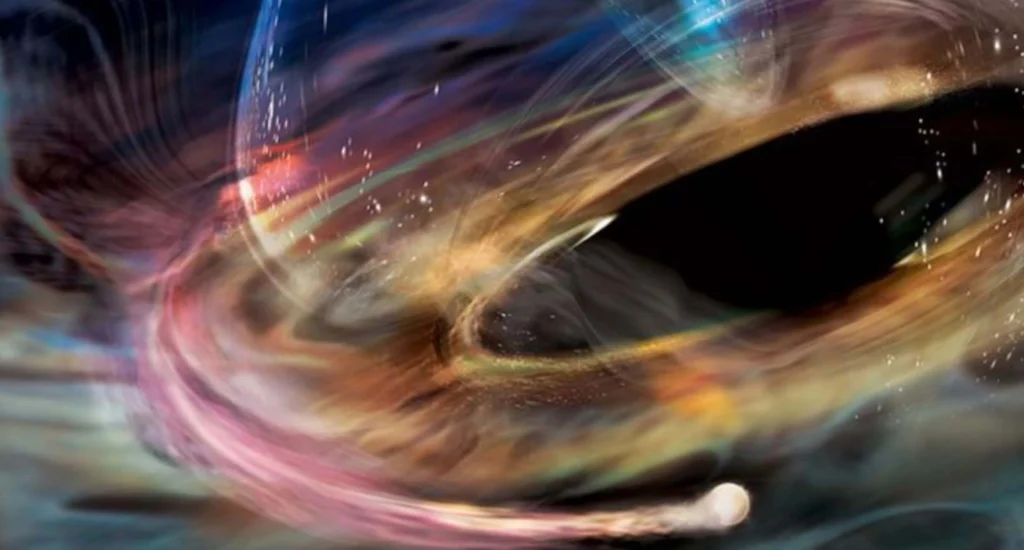A Strange Black Hole’s Bizarre X-Ray Bursts Defy Expectations
- Fahad Bin Khalid
- January 17, 2025
- 11:24 am
- 37
- Trending

Strange black hole behavior has baffled astronomers observing the black hole 1ES 1927+654, located 270 million light-years away. This massive black hole, weighing as much as one million suns, displays peculiar X-ray bursts. These bursts, which have grown more frequent over time, challenge our understanding of black holes and cosmic dynamics.
A Black Hole Full of Surprises
The mystery began when the corona surrounding the black hole disappeared and then reappeared unexpectedly. This corona is a billion-degree cloud of charged particles that typically surrounds black holes. Scientists then observed strange black hole behavior, including X-ray bursts that initially occurred every 18 minutes. Recently, these bursts have accelerated, occurring as often as every seven minutes.
Astronomers believe that these unique flares offer valuable insights into black hole behavior and their interactions with surrounding matter.
A White Dwarf’s Role in the Phenomenon
Researchers suspect a white dwarf is behind this strange black hole behavior. A white dwarf is the dense core left after a star has exhausted its fuel. This particular white dwarf has ventured dangerously close to the black hole’s event horizon, the point beyond which nothing can escape.
Simulations by MIT researchers and the European Space Agency suggest that the white dwarf is shedding its outer layers. These layers fall into the black hole, producing the powerful X-ray flares. The bursts’ increased frequency indicates that the white dwarf is moving closer to the black hole with each orbit.
A Cosmic Dance of Survival
Despite its proximity to the black hole, the white dwarf seems to resist falling into the event horizon. Its dense, compact nature allows it to endure the immense gravitational forces. As the white dwarf sheds material, a “kickback” effect propels it slightly away from the black hole. This delicate balance creates a cosmic dance, where the white dwarf approaches but avoids destruction.
Erin Kara, an MIT physicist, explains, “White dwarfs are small and compact, so they’re very difficult to shred apart. If this scenario is correct, this white dwarf is at the turn-around point, and we may see it get further away.”
Unraveling Cosmic Mysteries
This strange black hole behavior offers astronomers a rare glimpse into the dynamics of black holes and their surroundings. The discovery, soon to be published in Nature, marks a significant milestone in understanding these mysterious celestial objects.
Astronomers will continue studying 1ES 1927+654 to uncover more about its behavior and interactions with the white dwarf. This system highlights the universe’s complexity and the many surprises it holds for those who seek to understand it.
Conclusion
Strange black hole behavior like that seen in 1ES 1927+654 challenges existing theories about black holes and their interactions. The bizarre X-ray bursts and the resilient white dwarf’s survival add a fascinating chapter to our cosmic discoveries. As astronomers observe this unique system, they will likely uncover more secrets about the universe’s hidden workings.



